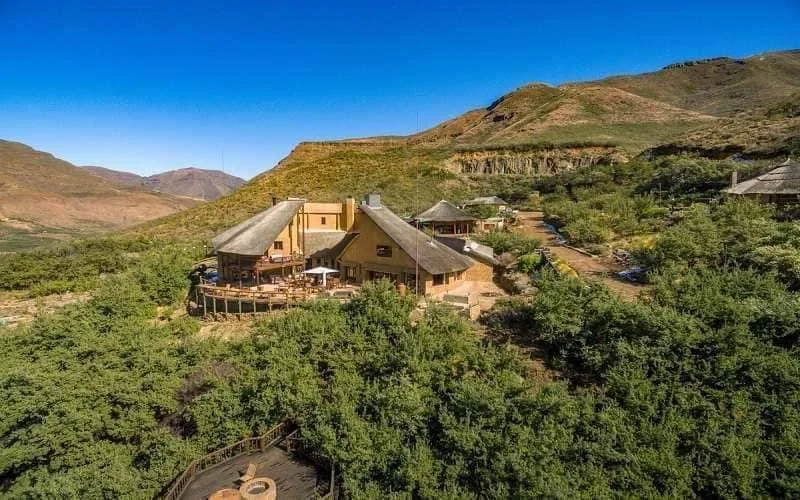Lesotho’s more than just a little spot locked inside South Africa, it’s a tough mountain land with a spirit that won’t quit. Sitting high up in the Drakensberg range, this place stands out with its Basotho people, a language that feels like home, and a culture that’s weathered some wild storms. It’s the only country totally above 1,000 meters, and that high life shapes how folks farm, fight, and live. The identity here comes from Sesotho words, lively dances, and a history of holding their ground. This is about digging into where it sits, what its language and culture bring, and how it carves out its own space in Africa, all real and straight up.
Quick Hits
- Mountain Home Base
- Rugged Ground and Crazy Weather
- Old Days and a King’s Fight
- Sesotho Words That Matter
- Dances and Tunes With Heart
- Eats From the Hills
- Mixing Old Beliefs and New Faith
- Getting Through Rough Patches
- Sticking to Basotho Roots
- Keeping the Fight Alive
Mountain Home Base
Lesotho’s a mountain kingdom, the only place on Earth all above 1,000 meters, wrapped by South Africa like a high hideout. It’s around 30,355 square kilometers, with Maseru, the capital, situated at 1,600 meters by the Caledon River. The Drakensberg Mountains rule here, topping out at Thabana Ntlenyana, 3,482 meters, taller than anything south of Kilimanjaro. That height keeps it cool, with snow in winter, and makes it a safe spot long ago. It’s cut off but fierce, a land where the thin air breeds a stubborn crew.

Rugged Ground and Crazy Weather
The land’s a wild ride. Most of it’s rocky highlands, with steep drops and flat tops slashed by rivers like the Orange. The Maloti Mountains are full of caves and cliffs, while the lowlands near the border are less wild but still rough. The weather flips fast, hot, rainy summers that flood, and cold winters with snow piling up. Folks farm on slopes, herd sheep on edges, and build stone huts that hold up. That crazy mix makes life hard, but shapes people who roll with it.
Old Days and a King’s Fight
Lesotho’s past starts with the San, who painted rocks in the Maloti caves maybe 2,000 years back. By the 1800s, the Sotho, led by King Moshoeshoe I, ran from Zulu wars and set up shop in 1824, kicking off the Basotho nation. He turned Thaba Bosiu, a flat mountain, into a fortress to dodge Boers and British. The British made it a protectorate in 1868 to keep it safe from Boer grabs, and it broke free in 1966. That king’s fight set a tone of never backing down that still sticks.
Sesotho Words That Matter
Sesotho is the soul of Lesotho, spoken by over 90% as their main language. It’s a Bantu deal with clicks and rhythms, packed with sayings like “Motho ke motho ka batho” (“You’re human through others”), pushing togetherness. Kids pick it up in school with English, the other official tongue, but Sesotho’s the real talk—heard in markets, songs, and fights. Dialects shift a bit by area, and it’s written with funky letters like “ŋ” for nasal sounds. That language keeps Basotho identity strong, a voice that won’t die out.
Dances and Tunes With Heart
Dances here are full of life. Mokorotlo steps high with straw hats to honor Moshoeshoe, lighting up festivals. Mohobelo, a men’s stomp, echoes war moves and pounds through villages. Songs tell it all—soft tunes with sekgapa drums or lekolulo flutes sing of cattle or love. Back in colonial days, music fired up resistance, and now it’s a blast at the Morija Arts Festival yearly. Kids grab the beats, tossing in new sounds, keeping the heart beating.
Eats From the Hills
Food here is tough and tasty. Papa, a thick maize mush, is the go-to, scooped into sesotho stews with beans, meat, and chili. Moroho, wild greens like rape or pumpkin leaves, adds bite, often with sheep fat. Joala, a sorghum beer brewed in clay pots, flows at get-togethers. Cattle mean wealth, so beef’s a big deal, dried into biltong for lean times. Meals are a group thing, eaten off mats, a habit from old days that still pulls people close.
Mixing Old Beliefs and New Faith
Religion’s a mash-up that holds. About 90% are Christian—Lesotho Evangelical or Catholic—brought by missionaries in the 1800s, with churches all over the hills. But old ways stick—ancestors get rituals at graves, and rainmakers still step up for dry spells. Lots blend it, hitting church then pouring beer for spirits. This came from chiefs leading worship before, and it works, with mosques and shrines side by side, a quiet toughness through shifts.
Getting Through Rough Patches
Lesotho’s taken hits. The 1800s wars pushed Moshoeshoe’s moves, and colonial rule snatched land, leaving 90% mountainous and hard to work. After 1966, droughts and HIV slammed it—25% infected by the 2000s—but folks kept going. The 1998 riots after elections torched Maseru, but they rebuilt quick. Now, many work South African mines, sending cash home, a hustle born from needing to eat and hold onto culture.
Sticking to Basotho Roots
Identity here is a point of pride. The flag—blue, white, green with a mokorotlo hat—yells peace, rain, and grit, tied to Moshoeshoe’s days. The hat’s worn everywhere, a unity sign. Basotho blankets, woven with designs, keep warm and show status—kings get the best. The Morija Museum holds old gear, and kids learn Sesotho stories. Despite the struggle, this pride fuels art and tunes, a war-born toughness that won’t let go.
Keeping the Fight Alive
The future’s a tough call, but the push doesn’t stop. Tourism hypes the mountains and Moyeni fossils, though roads suck. Education’s shaky—only 60% finish primary—but new plans aim to fix it. Young folks overseas send money back, sparking hope. Political mess, like the 2014 coup try, shakes things, but leaders chase stability and health care. With that highland grit, Lesotho’s carving a road ahead, step by step.

